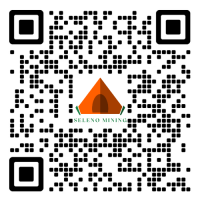According to the official news of the China Geological Survey, from August 20 to 22, in order to speed up the implementation
of the new round of strategic action plan for mineral exploration breakthrough of the Ministry of Natural Resources and the
China Geological Survey, vigorously promote the construction of the Himalayan metallogenic belt and large-scale resource bases,
the academic seminar on the progress of lithium tin exploration in the Himalaya and the construction of large-scale resource
bases was held in Shannan, Xizang.
IT Home Note: A mineralization zone, also known as a mineralization zone or belt, is an area with common geological structures,
geological development history, and mineralization processes. It is distributed in a narrow strip shape called a belt (with a length
to width ratio greater than 2), and a zone with a similar length to width ratio (less than 2:1).
The conference focuses on the exploration progress and direction of lithium beryllium tin and other large resource bases in the
Himalayan metallogenic belt, summarizes the research results and exploration progress of the Himalayan collision orogeny
process and lithium beryllium tin polymetallic mineralization laws, analyzes the key scientific issues that restrict the construction
of resource bases, and discusses the deployment direction of resource base construction work. Experts and scholars from China
Geological Survey, Chinese Academy of Sciences, Xizang Autonomous Region Geological Survey, Nanjing University, China
University of Geosciences (Beijing) and other units and universities made conference reports.
The meeting believes that the Chengdu Geological Survey Center and other units have long been rooted in the Himalayan
metallogenic belt to carry out geological survey work. Based on a detailed analysis of the structure and material architecture
of the Cuonadong dome in the eastern Himalayas, they have innovatively proposed a new model of Himalayan magma dome
rare metal mineralization. In 2023, a large tin polymetallic deposit was discovered in the Longzi Xianglin area using this model,
and a new pegmatite type lithium deposit was discovered in the Luozhagabo area. Since the beginning of this year, the deployment
and implementation of basic drilling in the Gabo area has achieved significant breakthroughs in mineral exploration, and is expected
to submit the first large-scale lithium deposit in the Himalayan metallogenic belt.
The meeting pointed out that the Himalayan tectonic belt is an important component of the East Tethys tectonic domain, which
has developed the world's largest high-resolution light colored granite belt and has great potential for lithium beryllium tin
polymetallic mineralization and prospecting. We need to coordinate the strengths of the bureau system and select a group
of key areas with great resource potential and the ability to quickly achieve breakthroughs in mineral exploration. At the same time,
we will increase efforts in basic geological surveys and technological breakthroughs, create a model of coordinated linkage between
the central, local, and enterprise levels, and promote the construction of large-scale resource bases such as lithium and tin in the
Himalayan metallogenic belt.
 微信扫码 关注我们
微信扫码 关注我们

24小时咨询热线+86-0755-89966882

移动电话+86-13823321061
Copyright © 2014 All Rights Reserved. selenogroup Ltd 地址:19/F, Vanke Tianyu Plaza, No. 7188 Longxiang Avenue, Jixiang Community, Longcheng Street, Longgang District, Shenzhen, China 粤ICP备201411357843号 XML地图 网站模板